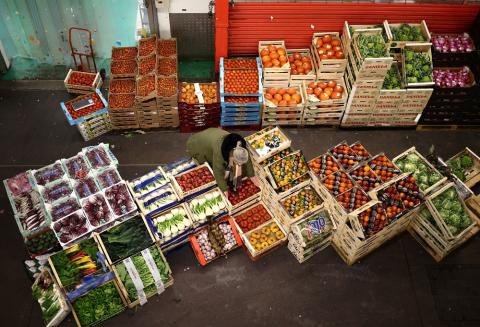
Economic growth in the US slowed to an annualized 2 percent in the third quarter of 2021, dropping from the 6.7 percent expansion it experienced in the second quarter, an advance estimate by the country’s Bureau of Economic Analysis showed.
This is the lowest rate since the second quarter of 2020 when the economy suffered a historic contraction.
Consumer spending faced a setback due to shortfalls in some commodities as a rise in Covid-19 infections meant that the global supply chain underwent disruptions.
US jobless claims
Initial unemployment claims in the United States declined to 288,000 in the week ending 23 October, data released by the US Department of Labor showed. This is fewer than last week’s figure of 291,000 claims and is the lowest level since 14 March 2020.
The advance seasonally adjusted insured unemployment rate stood at 1.7 percent for the week ending 16 October, falling by 0.1 percent from the previous week’s level. This rate measures the percentage of the number of people receiving unemployment insurance.
Unemployment in Western Europe
The German unemployment rate tapered off slightly in September, falling to 3.2 percent down from 3.3 percent in the previous month, Germany"s Federal Statistics Office said. However, the seasonally adjusted unemployment rate remained unchanged at 3.4 percent.
Meanwhile, Spain’s unemployment rate declined to 14.57 percent in this year’s third quarter, falling from 15.26 percent in the previous quarter, official data revealed.
Japan"s interest rates on hold
Japan’s central bank kept its rates unchanged for the short-term interest rate and 10-year government bond yields at -0.1 percent and around 0 percent respectively during its October meeting.
The bank also cut its forecast for the rate of GDP growth for the current financial year to 3.4 percent down from July’s expectation of 3.8 percent.
Weak consumption and a slowdown in exports were mainly responsible for the downward revision.
As for 2022, the economic growth rate forecast was favorably altered to 2.9 percent compared to the previous 2.7 percent as vaccination rollouts gain momentum.
In addition, the bank slashed its consumer inflation estimate for the year ending March 2022 to zero compared to an earlier prediction of 0.6 percent, due to the impact of cellphone fee reductions and the change in the price index’s base year.
Looking at next year, the consumer inflation forecasts were the same at 0.9 percent.
Moreover, Japanese retail sales slipped by 0.6 percent year-on-year in September, compared to the previous month"s much steeper fall of 3.2 percent.
Spain’s inflation
Spain"s annual inflation rate likely rose to 5.5 percent in October, according to a preliminary estimate by Spain"s National Statistics Institute. This is a noticeable rise from the previous month’s 4 percent.
This is the biggest jump in consumer prices since September 1992 and was driven by soaring energy prices.
The annual core inflation rate, which excludes changes in volatile items, is also expected to reach a record 1.4 percent in October up from 1 percent in the previous month, a preliminary estimate showed.
In addition, consumer prices are predicted to rise 2 percent month-on-month, the highest since January 1986, after a 0.8 percent increase in September.
Brazil’s interest rate decision
For the sixth time this year, Brazil"s central bank raised its interest rate by 150 basis points to reach 7.75 percent. At the start of the year, the interest rate in the country was just 2 percent.
This comes at a time when the country is grappling with double-digit inflation rates. The annual inflation rate for the country reached 10.3 percent in September. This is the second highest inflation rate among G20 countries, behind only Argentina.
Italy’s manufacturing and consumer confidence
Italy"s National Institute of Statistics (ISTAT) said that the manufacturing confidence index rose to 114.9 points in October compared to 113.2 points in September. Outlook for orders and future production improved while expectations for inventory levels were more pessimistic.
Additionally, the consumer confidence index went down by 1.2 points in October to 118.4, down from 119.6 in the previous month.












